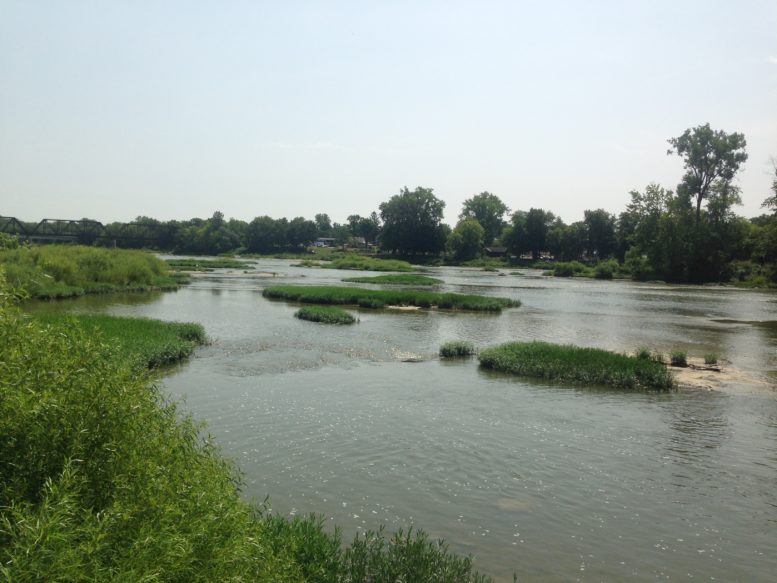Educator Laura Schetter brought a souvenir back from the Arctic Circle — a plastic water bottle. Schetter found the bottle on a beach that she expected to be pristine. Instead she found trash carried by the Gulf Stream to this most remote place.
That’s just one of the stories she has to tell. Also this year she was in India studying yoga. In the village where she was staying she met the water granny, the elder who was charged with turning on and off the taps to each home daily, and making sure villagers didn’t waste the water. That water was precious. The lake the villagers had relied on had dried up as the climate has gotten warmer. An attempt to drill a conventional well had failed. So they needed a deeper well, cutting through rock.
Schetter’s stories about water aren’t all from foreign lands. In the summer of 2014, a deadly algae bloom left the Toledo area, including Holland, Ohio where she lives, without water.
All these stories got Schetter thinking about water, the way people depend on it and the way it connects them. She took her students from the Wildwood Environmental Academy where she is the environmental studies coordinator to the water, the nearby Maumee River and to the shore of Lake Erie. They tested the water, played along its banks and picked up trash. One student exclaimed after looking at the 80 pounds of trash they’d collected that he felt like he was doing something to help the environment.
All this comes together in H2you.co, a new project the educator has just launched. Schetter wants to gather water stories from around the globe. The stories can come from the young and old, from travelers, local explorers and educators. She hopes that having these stories gathered together will impress on people the worldwide nature of concerns about water.
Schetter writes on her blog site lauraschetter.com: “H2yOu is a project where students and explorers all over the world share and compare what is unique about how they source, care for, and conserve our shared global resource of water. This geographic literacy project was designed to inspire water conservation and action, and to raise awareness on the geographic and human connectedness of water.”
On Saturday she traveled to Bowling Green where she spoke to about a dozen foreign exchange students visiting Northwest Ohio through the auspices of the Rotary Club. (Northwest Ohio Rotary has taken on water as a particular focus including hosting a conference several weeks ago.)
One German student spoke of still being able to drink directly from a spring; a Brazilian student talked about the water in Sao Paulo being shut off for long periods of time. A Polish student said that the parks long the Danube were the only places public drinking of alcohol was allow, so it was a popular spot for gathering. An Ohio student told a family story about how her aunt was swimming in the Sandusky River and came up from a dive with toilet paper draped over her shoulder.
Maybe these stories will make readers and writers more aware of the issue, and maybe being more aware they will be move to act, and maybe, just maybe, the story of water will have a happy ending.
(Inspired by Schetter I have started posting daily water photos on Instagram using #dailywater and including a link to H2you.co)

